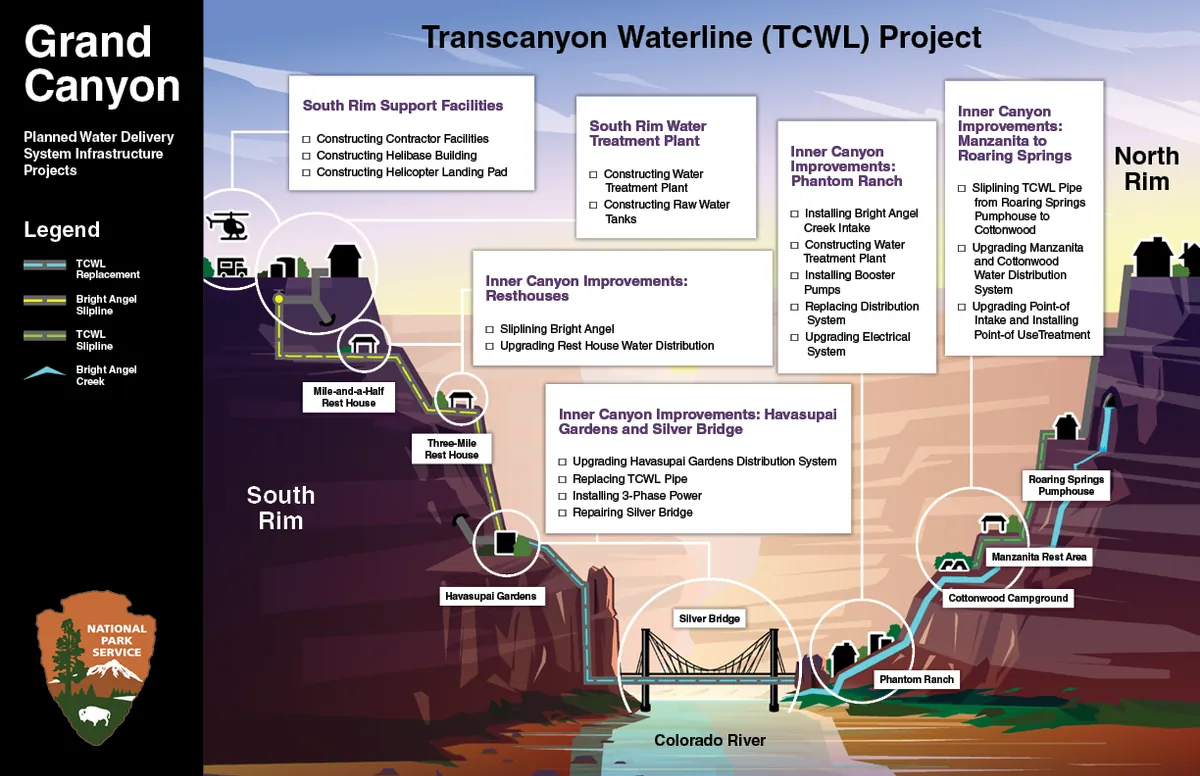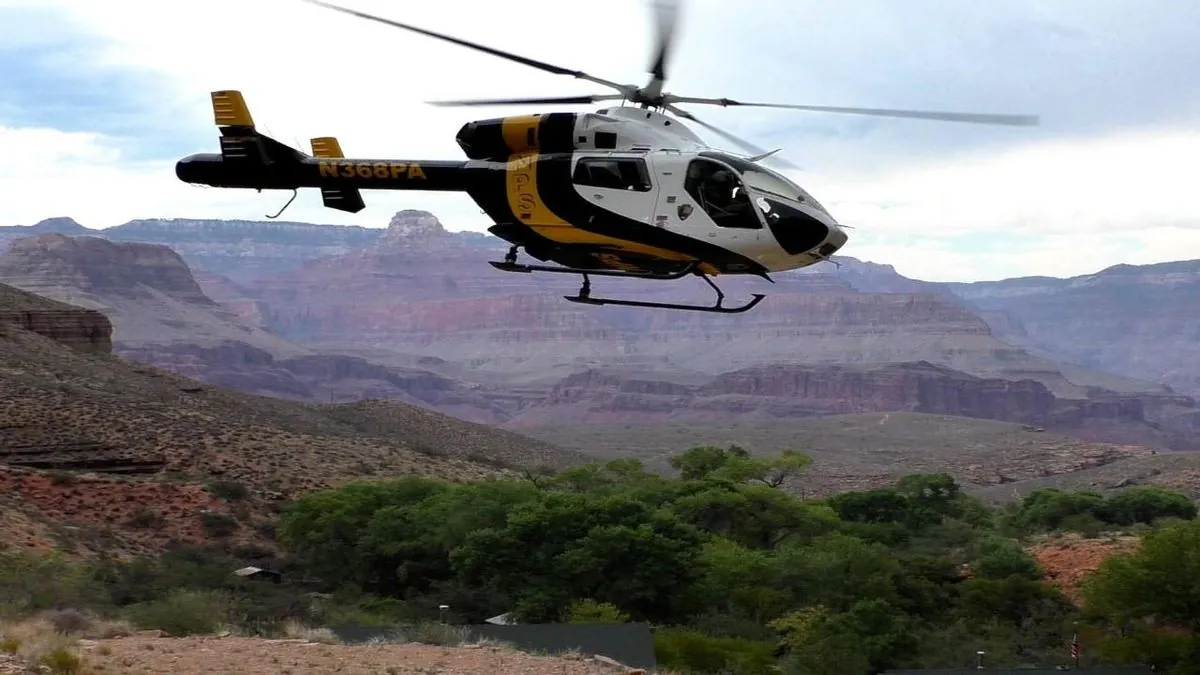Grand Canyon's Aging Water Pipeline: A Decades-Long Challenge
The Grand Canyon's Transcanyon Waterline, built in 1970, faces frequent breaks and disruptions. A comprehensive fix is planned for 2027, highlighting the broader issue of aging infrastructure in U.S. national parks.

The Grand Canyon, one of America's most iconic national parks, has been grappling with a persistent infrastructure challenge for over a decade. The Transcanyon Waterline, a crucial 12.5-mile (20-kilometer) pipeline supplying potable water to the South Rim and inner canyon, has far exceeded its intended 30-year lifespan since its completion in 1970.
Since 2010, the pipeline has experienced more than 85 breaks, causing significant disruptions to park operations and visitor experiences. These incidents have led to water restrictions and even cancellations of overnight stays at popular South Rim hotels, impacting summer vacations and holiday weekends.
The complexity of repairing this vital infrastructure is noteworthy. Robert Parrish, chief of planning, environment and projects at Grand Canyon National Park, explains that fixing the pipeline is no ordinary task. Helicopter assistance is often required to transport workers and materials to remote leak locations, making each repair a logistical challenge.

For years, the National Park Service addressed pipeline failures reactively, dealing with issues caused by rock falls, freezes, flash floods, and other natural occurrences on a case-by-case basis. However, this approach proved unsustainable as the pipeline continued to deteriorate.
"It isn't like fixing most pipelines. Helicopters had to shuttle workers to the leak. They would measure the damaged pipe's thickness and bend, return to the rim and craft a replacement piece, then head back down to install the new section."
The shift towards a comprehensive solution began in the early 2010s. After extensive planning and environmental assessments, a major overhaul project was approved in 2019. The Transcanyon Waterline project, expected to be completed around 2027, will involve replacing and upgrading various components of the water system, ensuring the park's water supply needs are met for the next 50 years or more.
Funding for this massive undertaking comes from multiple sources, including Congress, park fees, and other contributions. In 2023, a $208 million construction contract was awarded, marking a significant step forward in addressing this long-standing issue.
The Grand Canyon's water pipeline challenges reflect a broader problem facing U.S. national parks. The National Park Service currently faces a nearly $23 billion maintenance backlog for aging infrastructure across its properties. The Grand Canyon alone has a backlog of $823 million for maintenance and repairs.
While the Transcanyon Waterline project represents progress, it also highlights the complexities of maintaining and upgrading critical infrastructure in national parks. As Tate Watkins, a researcher at the Property and Environment Research Center, notes, "People like cutting ribbons on new national parks. But it's a lot less sexy to talk about fixing sewer lines or rebuilding a water line for the Grand Canyon."
As work continues on this vital project, it's worth remembering that the Grand Canyon is more than just a tourist destination. It's a UNESCO World Heritage Site, home to diverse ecosystems, and a place of immense geological and cultural significance. Ensuring its infrastructure can support millions of annual visitors while preserving its natural beauty is a complex but essential task for future generations to enjoy this natural wonder.


































